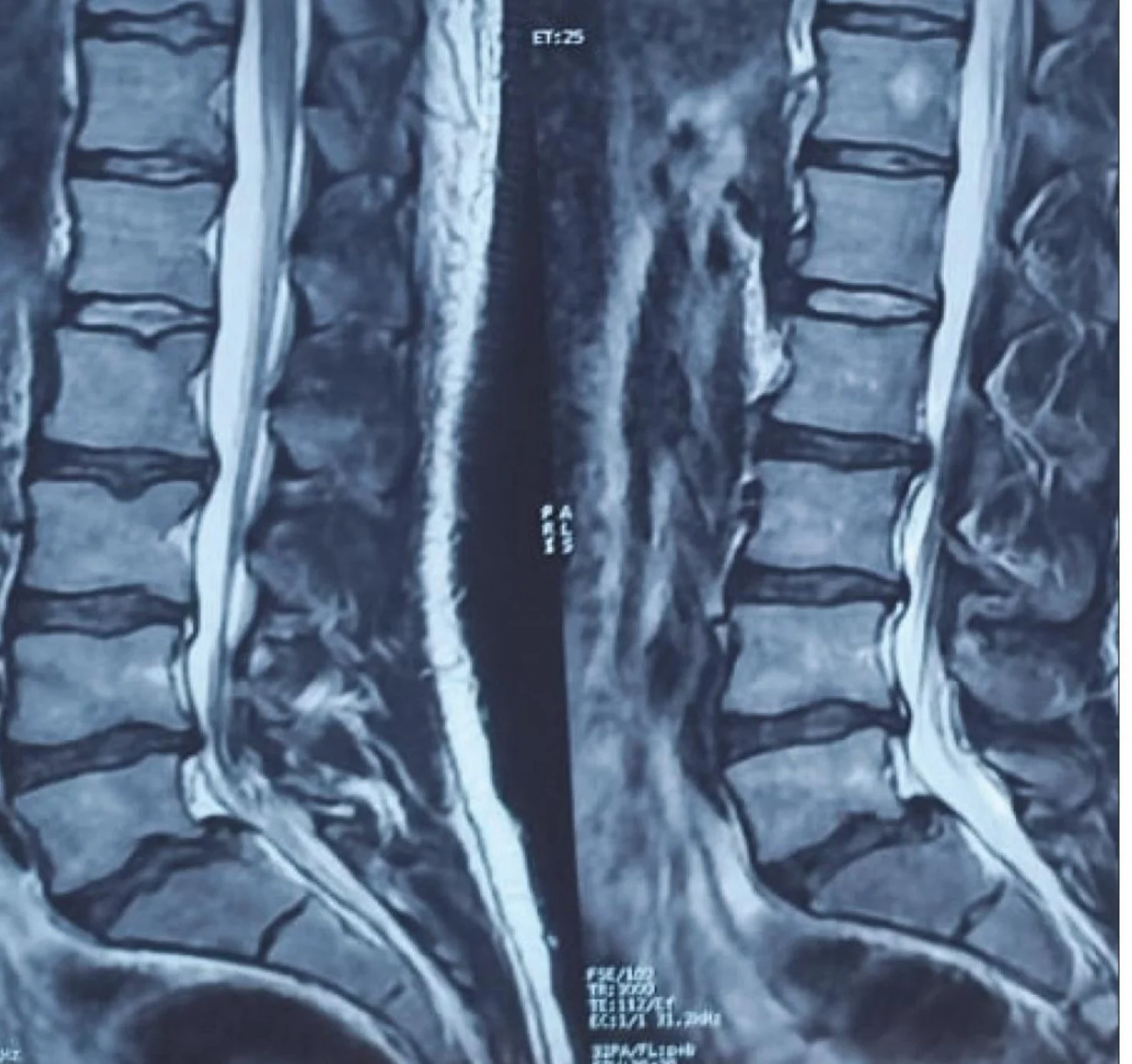Better Lumbar Posture, Better Results: Research on Radiculopathy Recovery
Purpose
The study aimed to see whether coronal balance—spinal alignment viewed from the front/back—predicts how well patients recover with conservative treatment for lumbar disc herniation causing nerve root pain.
Design & Participants
Type: Multicenter, prospective cohort case series
Locations: 5 physiotherapy clinics (UAE and Egypt) from Jan 2021 to Mar 2023
Patients: 90 adults (mean age: 44 years; 54% male) with MRI-confirmed lumbar herniated nucleus pulposus (HNP) presenting with back and leg pain
Treatment: Conservative therapy—specific exercises, diathermy, traction, education, home exercises, and medications
Radiographic Measures
Each patient had lumbar spine MRI and radiographs. Coronal balance parameters were measured, including the lumbosacral angle and Fractional Lumbosacral Curve (FLSC) .
Outcome Metrics
Successful outcome at 6 months was defined by improvements in all four domains:
Pain (leg radiculopathy) ≥17.5 points on 0–100 NRS
Fatigue reduction ≥7.5 points
Distress reduction ≥5 points
Daily activity interference reduction ≥9.5 points
Key Results at 6-Month Follow-Up
Younger age predicted better improvement in pain, fatigue, and interference (each year of age decreased odds of success by ~11–15%)
Lower education level was surprisingly associated with higher odds of success in pain and fatigue improvements
Most importantly, better (more normal) coronal alignment, measured by lumbosacral angle per degree, significantly increased the odds of successful outcomes across all measured domains (pain, fatigue, distress, interference). Worsening alignment reduced odds of success by ~2.5–28% per degree depending on the domain
Why This Matters for us and you
1. Posture (Coronal Balance) Predicts Outcomes
The study shows that how aligned your lumbar spine is in the frontal plane (side-to-side) affects your chance of recovery. Misalignment predicts poorer results, despite receiving the same conservative care.
2. X-Ray Provides Objective Insight
Standard clinical exams can miss subtle but important spinal imbalances. Radiographic imaging (X-ray) reveals coronal imbalance that can guide treatment decisions and predict outcomes.
3. Individualized Care Requires Structural Assessment
A thorough postural and radiographic assessment lets a CBP practitioner tailor care (e.g., specific exercises, lateral traction, mirror-image adjustments) to correct structural issues rather than apply one-size-fits-all rehab.
4. Early Detection Enables Better Results
By identifying misalignment early, interventions can correct it before degeneration worsens or chronic symptoms set in. The study supports that timely structural correction offers a notable advantage.
5. Chiropractic Biophysics Is Evidence-Informed
The findings align with CBP’s principle that spinal alignment (both sagittal and coronal) is critical to rehabilitation success. It reinforces the value of structural approaches in addition to symptom management.
References:
Aljallad YAH, Moustafa IM, Badr M, Hamza N, Oakley PA, Harrison DE. Lumbar spine coronal balance parameters as a predictor of rehabilitation management outcomes in patients with radiculopathy due to lumbar disc herniation: A multicenter prospective case series study. Heliyon. 2024;10(23):e40613. doi:10.1016/j.heliyon.2024.e40613
